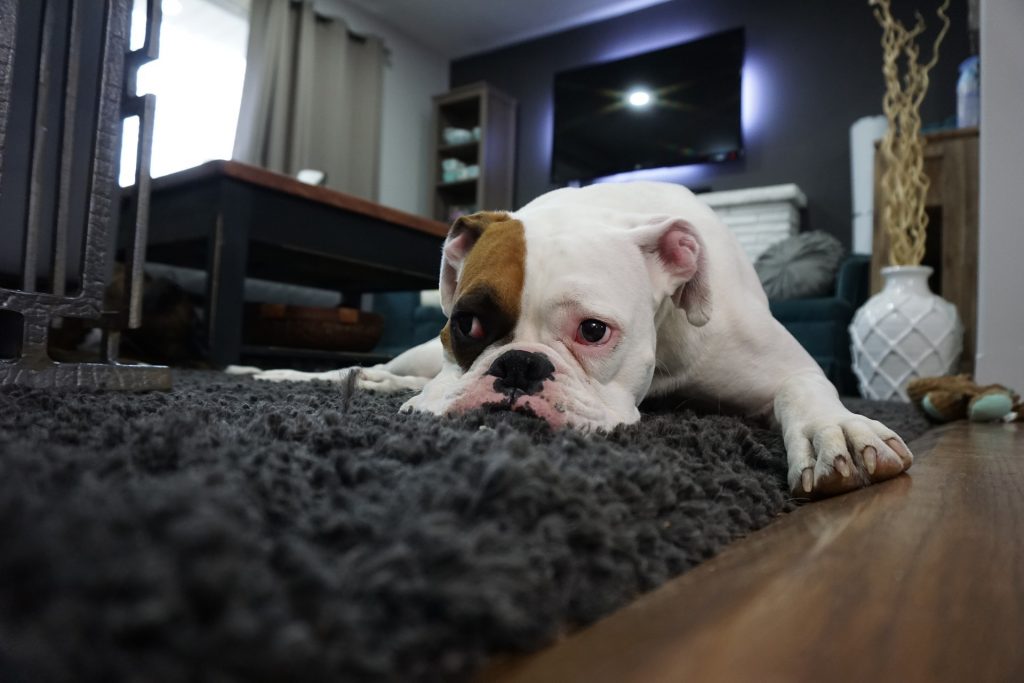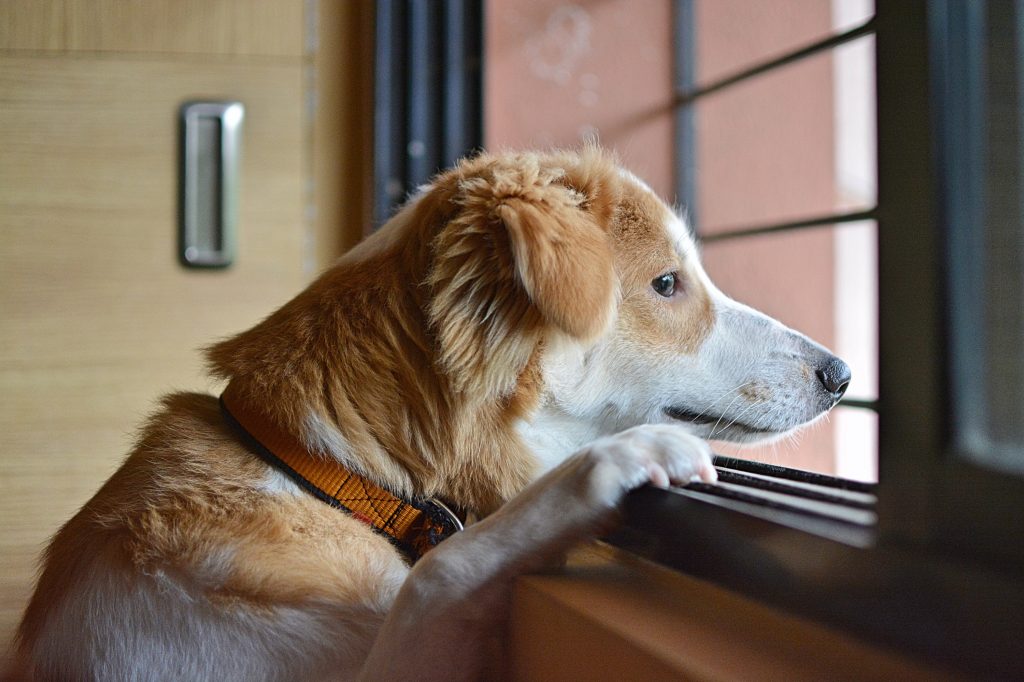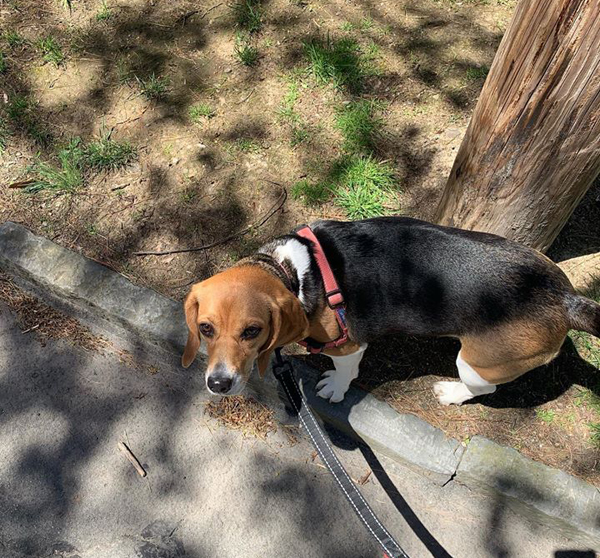All over social media people post photos of family members cuddling with their dogs and trade stories on how much they love being at home with their puppies. Unfortunately, there’s a downside to this lovefest.
Behavior and training experts say that once the stay-at-home COVID-19 restrictions are lifted and life goes back to normal (or a new normal), many dogs will suffer from separation anxiety.

Image by Heather Gunn from Pixabay
So What Exactly is Separation Anxiety?
According to the Humane Society of the United States, if your dog seems to worry when you’re heading out, destroys stuff when you leave the house, follows you from room to room when you’re home, goes berserk when you come back and seems to be eyeing you suspiciously even before you leave—you may be dealing with a case of separation anxiety.
Some of the most common behaviors of a dog experiencing separation anxiety include:
-
- Digging and scratching at doors or windows attempting to reunite with their owners
- Destructive chewing
- Howling, barking and whining
- Urination and defecation (even with otherwise house-trained dogs)
A Sudden Change in Schedule Can Cause Separation Anxiety
An abrupt change in schedule in terms of when or how long a dog is left home alone can trigger separation anxiety. For example, dogs who are now used to having their guardians working from home might become anxious when left home alone again.
“Dogs behave because of the rules or environment we create,” said Ken Nolte, a professional dog trainer, and owner of the Etlon Training Academy, serving families in the Middletown, Poughkeepsie and Newburgh, NY area. “They will react based on that change. It’s the same anxiety we will feel when going back to work in this new environment that has been created for us.”
Just how difficult it will be for dogs to adjust to being home alone again depends on the dog’s personality Nolte said. Many families adopted or fostered rescued dogs while working from home, and for these dogs, the sudden change in routine might be challenging.
Nolte said that rescued dogs came from “… an unsettled constantly-changing environment” to a consistent routine in loving homes. These dogs are bound to feel uneasy when their new routine suddenly changes and they are left home alone.

Image by Amit Karkare from Pixabay
What You Can Do Now to Prepare Your Dog for Being Home Alone
For dogs with mild separation anxiety or dogs trying to readjust to being left home alone again behavior experts recommend counterconditioning. According to the ASPCA, this is a “…treatment process that changes an animal’s fearful, anxious, or aggressive reaction to a pleasant, relaxed one instead.”
Counterconditioning helps dogs suffering from separation anxiety by developing an association between being alone and good things.
Following are some things you can start doing now to help prepare your dog for being home alone:
-
-
- Create and stick to a routine for your dog. For example, in a Tufts University news article, Stephanie Borns-Weil, a veterinary behaviorist at Cummings Veterinary Medical Center, advises setting up a regular feeding and walking schedule.
- Discourage attention-seeking behaviors from your dog. Borns-Weil suggests walking the dog before you head into your home office. When you return from the walk give your dog a Kong or other enrichment toy to help occupy his or her attention while you work.
- It’s important that your dog has a place to go for a time out or a break. This could be a favorite dog bed or an open crate or X-pen. This space should be off-limits to human family members. It’s a space where the dog gets used to spending some alone time.
- Use sit, down, and stay exercises to help dogs get comfortable in a room by themselves even when the family is home.
- Nolte recommends providing background music for dogs when home alone. Now, he said, is the time to start playing that music so the dogs become accustomed to the sound. “Play the same sequence of music and avoid heavy metal, rap, hip hop, etc.,” Nolte said.
- Help your dog slowly adjust to being home alone by leaving the house for short periods – maybe go for a drive or a walk. Leave for 30 minutes in the beginning and gradually increase the time you are away.
- Departures to and from home should be uneventful—no long goodbyes or overjoyed reunions. Many families unknowingly reinforce a dog’s separation anxiety by making a big fuss before leaving and when they get home.
- Some dogs gain comfort in cuddling up with recently worn clothes that smell like their favorite person. Also leave safe favorite toys or treats to keep him or her occupied.”Interactive toys can work, but don’t last long,” Nolte said. “Hambones the 3-4” ones work best, buffalo horns, antlers, and bully sticks also work. Variety and selection are key.”Many dogs enjoy Kongs stuffed with treats and a little peanut butter. When these are frozen overnight they provide dogs with a few hours of entertainment while home alone.
- Flower essences can help relieve stress in anxious dogs. Be sure to reach out to your veterinarian before trying any new product.
-
Borns-Weil believes that being forced to stay at home has given families more empathy for what their dogs go through when locked alone in a house all day. She said that just like us, dogs need “…mental stimulation, social contact, and exercise during the day to be happy.”
Beth Stultz-Hairston, president of Pet Sitters International, said professional dog walkers and pet sitters offer the perfect solution. Professional dog walkers help break up a dog’s day and provide not only mental stimulation and exercise but also lots of love.

Lola, a member of The Traveling Leash family, is enjoying her mid-day walks again now that mom has returned to work.
Finding the right professional pet sitter or dog walker takes time and lining up services now will help dogs make a smoother transition once stay-at-home orders are lifted Stultz-Hairston said.
For more information on separation anxiety visit:
https://www.aspca.org/pet-care/dog-care/common-dog-behavior-issues/separation-anxiety
http://www.humanesociety.org/animals/dogs/tips/separation_anxiety.html
